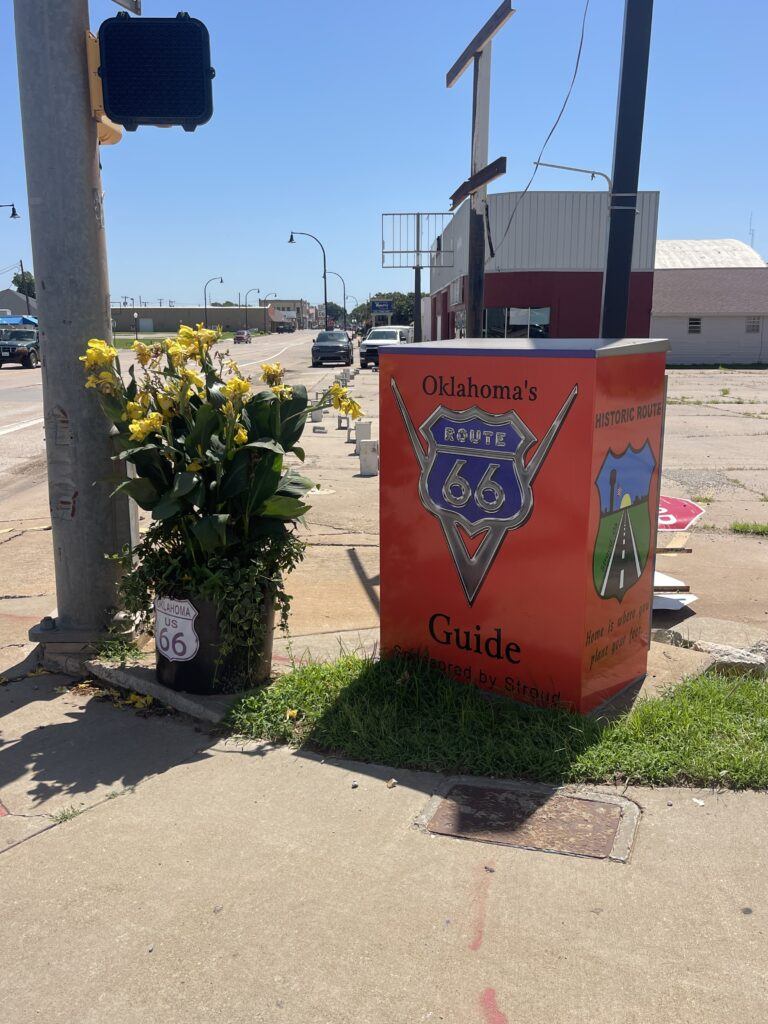From Ada to Stroud, Oklahoma
I was born and raised in Humboldt, Kansas and lived there my whole life till I left for college and got married. Both sets of my grandparents lived there in the same town only a few miles away from each other.
My dad’s mom and dad both graduated from Byng High School in Byng, Oklahoma. My grandma played basketball for the legendary Bertha Teague and her principle was Mr. Marvin Stokes. My grandma’s mom and dad (my great grandparent’s) still lived in the home in Byng on the corner of old Highway 99 that she graduated high school from long after she had gotten married and moved to Texas and then eventually moving to Humboldt, Kansas.
So when I was little we would come to Ada, Oklahoma for Thanksgiving some years, some years we would come for Christmas and occasionally we might come for a summertime visit.
Back over 50 years ago transportation was a single two lane highway. Small towns every 20 or 30 miles from each other made you slow down from your 55 miles per hour to fill up at local gas stations, get a glass bottle of Coke and our entertainment was writing down license tags from the cars in front of us.
It would take about five hours to make the drive to Ada from Humboldt. We would leave as the morning sky had just enough light for us to load the car and get in. And we would make it in time to eat dinner that night at my great grandparents house.
After being in the car for almost five hours, all the snacks were gone and we were bored as a young kid. As we approached Ada on Highway 99 it was a welcome sight to see an old filling station there on the right side of the road, the sign for Byng Schools and my great grandparents porch light shining as we topped the hill to their home.
I remember my dad, his mom and dad and thier family all talking about the “new” highway that was going to bypass that old Highway 99 that went by my great grandparents house. I didn’t understand it then, but as I have gotten older I understand the nostalgic of it.
That old stretch of Highway 99 holds more than just memories, it holds stories. Generations of travelers, locals, and towns have grown alongside it, from the days of slow Sunday drives to today’s quicker bypasses. As I set out recently on a day trip from Ada to Stroud, I couldn’t help but reflect on how this old road still weaves people together. It’s not just pavement—it’s a thread of history that connects places like Vamoosa, Bowlegs, and Stroud with the heart of families like mine. So come along with me as we travel a route shaped by time, tradition, and a few surprises along the way.
All my Gals That Gather loaded the church van and we started on our day trip journey.
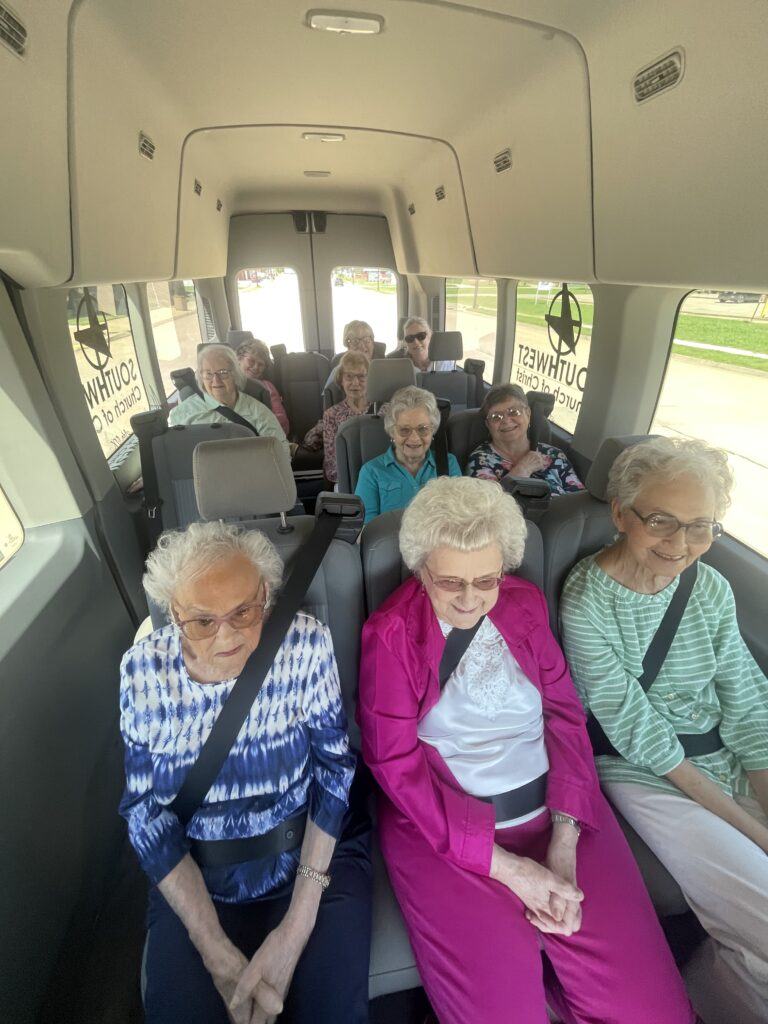 Gals That Gather Van Ride
Gals That Gather Van Ride
I told them some of the history of the highway we were on.
Highway 99
According to Oklahoma Department of Transportation records, Highway 99 was renamed in 1938 to align with Kansas’ highway system. What we know today as Highway 99 didn’t always go by that name. It actually began back in 1927 as State Highway 48, a nearly straight shot heading north from Ada. , making it easier for travelers heading north across state lines to follow a continuous road.
As the years passed and traffic patterns changed, the route of Highway 99 was slowly adjusted. In 1968, it was rerouted to bypass the small town of Konawa, and in 1977, the same thing happened in Drumright. What was once a busy two-lane highway through town centers turned into winding detours, leaving behind forgotten stretches of the old highway—quiet, scenic roads that now feel like hidden backdoors into Oklahoma’s past.
Other Interesting Info
Before 1944, Highway 99 ran right through the area that became Lake Texoma. When Denison Dam was built, rising waters submerged part of the highway, so it was rerouted in 1958 to a crossing further upstream over the new Texas–Oklahoma bridge .
As you make your way down the road, you’re following a path that’s been shaped and shifted over time, not just by human hands, but by the rise of water and the will of the land itself.
Memorial Highways & Bridges
Driving north towards Stroud we passed over several bridges and highways that were recognized with green signs as we progressed.
One year when we were doing traveling softball with my daughter, she was probably 10 and she saw one of those “Adopt A Highway” signs. She asked me, “How old do you have to be to adopt a highway”? I still see those adopt a highway signs and I think of her.
I was telling the ladies, as you head north out of Ada, you’ll pass a stretch of road named the Dr. Robert E. Cowling Memorial Highway, an honorary title for a man who poured himself into building up the local community. Not far from there, you’ll cross the South Canadian River on the Abbott–Haney Bridge, named for two local leaders whose legacy helped shape the area’s growth and identity.
And just before you reach Stroud, another familiar name greets you, Troy Leathers. That stretch of highway carries his name in honor of the impact he made, a fitting tribute woven into the road that connects so many pieces of Oklahoma’s story.
Echoes of Route 66
![]()
Just before you reach the heart of Stroud, Highway 99 crosses paths with one of America’s most iconic roads—Route 66. It’s a meeting point where history seems to pause and tip its hat. If you slow down just west of town, you might catch a glimpse of the old Ozark Trail—an early 1900s route that helped guide travelers long before numbered highways were the norm. Tucked nearby are stone box drains built around 1917, quiet reminders of a time when every mile of road was a labor of love and hope.
And as you ease into downtown Stroud, the glow of neon greets you like an old friend. Thanks to a community project dedicated to preserving the charm of the Mother Road, many of the historic signs have been restored to their former brilliance—casting colorful reflections on the storefronts and stories that line Main Street. It’s the kind of place where the past doesn’t just sit in a museum—it flickers and shines right alongside the present.
Vamoosa Name & Roots
The quirky name “Vamoosa” most likely comes from the same Spanish slang as “vamoose” (i.e., “let’s go!”) and locals say it was chosen by Native Americans who were relocated during the land runs, as if to gently joke, “we gotta get moving!” It’s one of those place names that makes you smile and wonder what conversations took place around a campfire or land claim when someone tossed it out with a half-laugh and a tired sigh.
Today, Vamoosa is quiet, but the cemetery tells you it was once full of life, love, and deeply rooted customs. Scattered among the headstones are small house-like structures built over graves—an old tradition brought by early settlers from Tennessee and Arkansas, especially those with Seminole and Choctaw heritage. Some say the little houses offered a shelter for the spirit, others believe they held personal belongings or sacred herbs. There’s even a small sign now that kindly reminds visitors: “No more house covers permitted.” A gentle nod to a tradition that’s fading, but not forgotten. One of widows’ husband is buried there. Also one of my best friends parent were buried there as well and she told me it was free to get a plot there….Interesting!
Beneath the town lies the vast Vamoosa is the Ada aquifer a massive underground source of water that quietly supports much of this region of Oklahoma. It’s deep and wide, flowing beneath creeks like Buckhorn and Jumper, feeding farms and families without ever making a sound. Just like the town above it, it’s easy to overlook but essential to the life around it.
As we keep making our way down the highway we see a sign for Bowlegs. One of my best friends was the valedictorian for Bowlegs! I know you should be impressed – ha!
Bowlegs
Though many assumed Bowlegs was named after Chief Billy Bowlegs, Seminole warrior and Confederate resister, the name actually honors David “Dave” Bowlegs, his grandson. In the early 1910s, Dave, his wife Rose, and their 2-year-old daughter Anna were brutally murdered. The community renamed the area “Bowlegs” in their memory, sold family land to cover legal fees, and held a funeral where it was their way of honoring not just a man, but a family that had been deeply woven into the community.
Bowlegs, like so many towns in Oklahoma, had its boom years. In 1926, oil was discovered by the Indian Territory Illuminating Oil Company, and almost overnight, the sleepy farmland turned into a bustling oil town. Saloons popped up, dance halls stayed busy, and places with names like the “Bucket of Blood” bar gave Bowlegs a wild west edge that rivaled big cities. At its peak, the town swelled to nearly 15,000 people a mix of oilmen, families, and fortune seekers hoping to strike it rich.
But Bowlegs wasn’t all rough and rowdy. The town invested in its youth and education, with its high school band winning national honors by 1928 and even opening a summer band school by 1933. It was a place of pride, full of ambition and heart.
Today, Bowlegs is quiet again home to just a few hundred folks but its history still runs deep. The Bowlegs family had strong ties to both Native and Freedmen communities, with figures like Caesar Bowlegs helping to bring life-saving smallpox inoculations to local residents. Stories like these don’t always make it into the history books, but they shaped Oklahoma just the same.
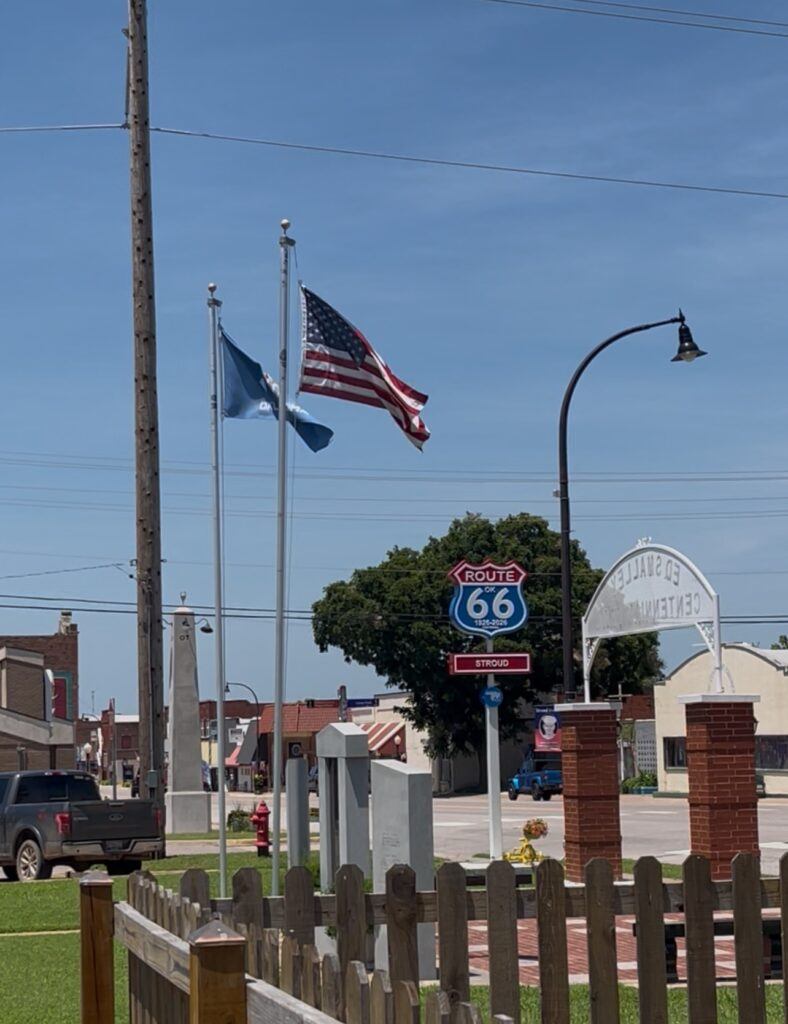
Stroud
The Heart of the Road: A Story from the Rock Café
As you roll into Stroud, Oklahoma, it doesn’t take long to feel the heartbeat of Route 66 pulsing through the town. Old neon lights flicker against red-brick buildings, and just off Highway 99 sits a little gem with a big story—The Rock Café.
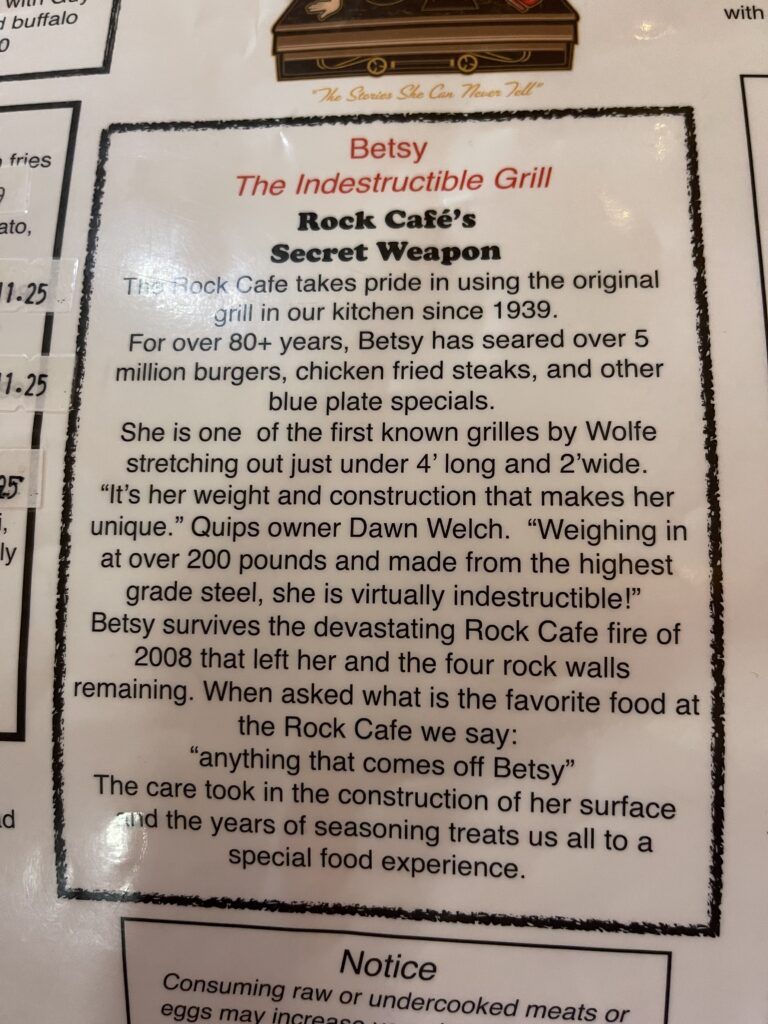
Built in 1939, the café was crafted from native sandstone pulled straight from the roadbed during construction of Route 66. A local craftsman named Roy Rieves stacked those stones by hand, creating a place that would become more than just a diner it would become a symbol of resilience and community. During World War II, the Rock Café fed soldiers as they passed through on Greyhound buses. It was the backdrop for tearful farewells and joyful reunions, a place where comfort food met comforted hearts.
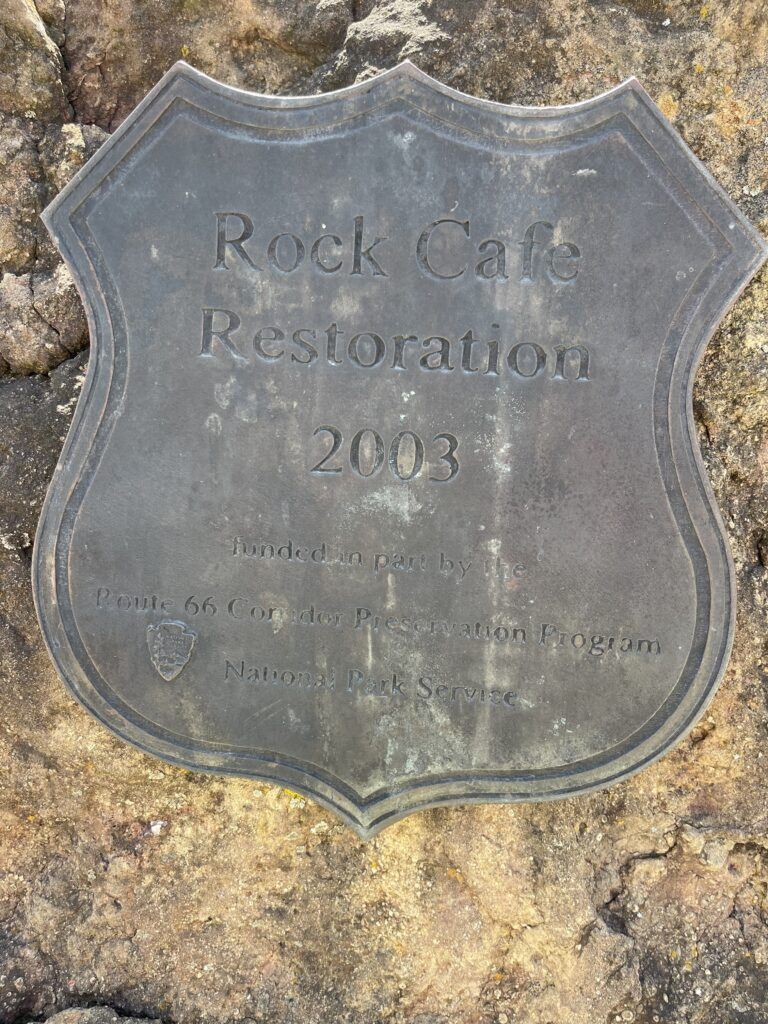
Decades later, in 1999, a tornado devastated much of Stroud, leveling the nearby outlet mall and shaking the town to its core. Yet, the Rock Café’s neon sign managed to stay lit—a small flicker of hope that inspired the town to rebuild. Then, in 2008, a fire gutted the building, leaving only the stone walls standing. But those sturdy stones—and the even sturdier spirit of owner Dawn Welch—carried it through. Just one year later, on May 29, 2009, the café reopened, stronger than ever.
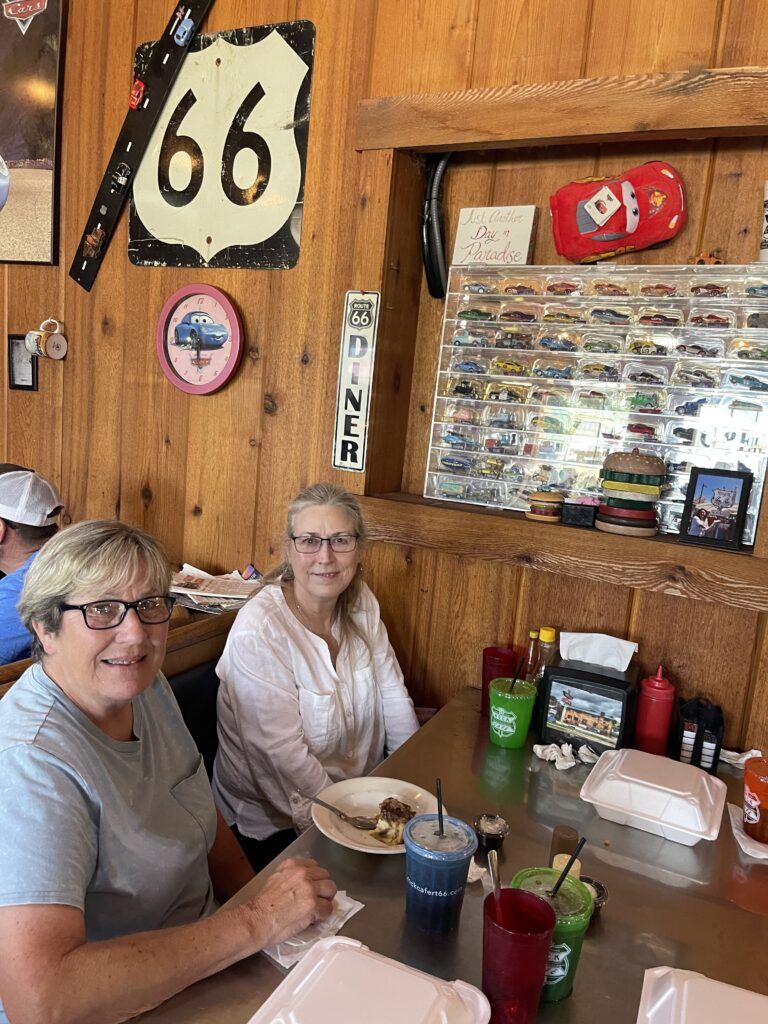
And if that story wasn’t already made for the movies… it practically became one. In 2001, Pixar scouts driving Route 66 stopped in Stroud and met Dawn. Her grit, grace, and story of rebuilding after tragedy deeply inspired them. Dawn didn’t know it at the time, but she would go on to be the real-life muse for the character Sally Carrera in Cars—the spunky, small-town business owner who helps bring Radiator Springs back to life. That’s right: Stroud’s Rock Café became part of Disney history.
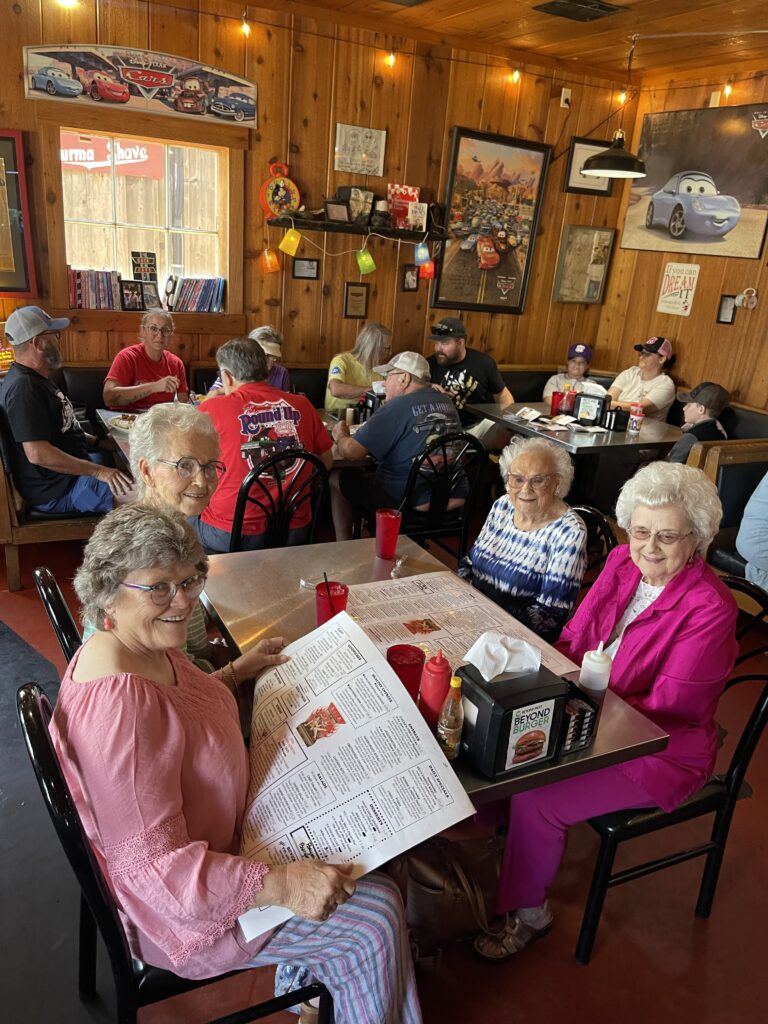
Today, the Rock Café still welcomes travelers, serving up hearty meals with a side of nostalgia. Whether you’re sitting at the original 1939 counter, admiring the vintage menus on the wall, or catching up with locals who’ve known each other for decades—you’ll feel it. That special spark. That Route 66 spirit.
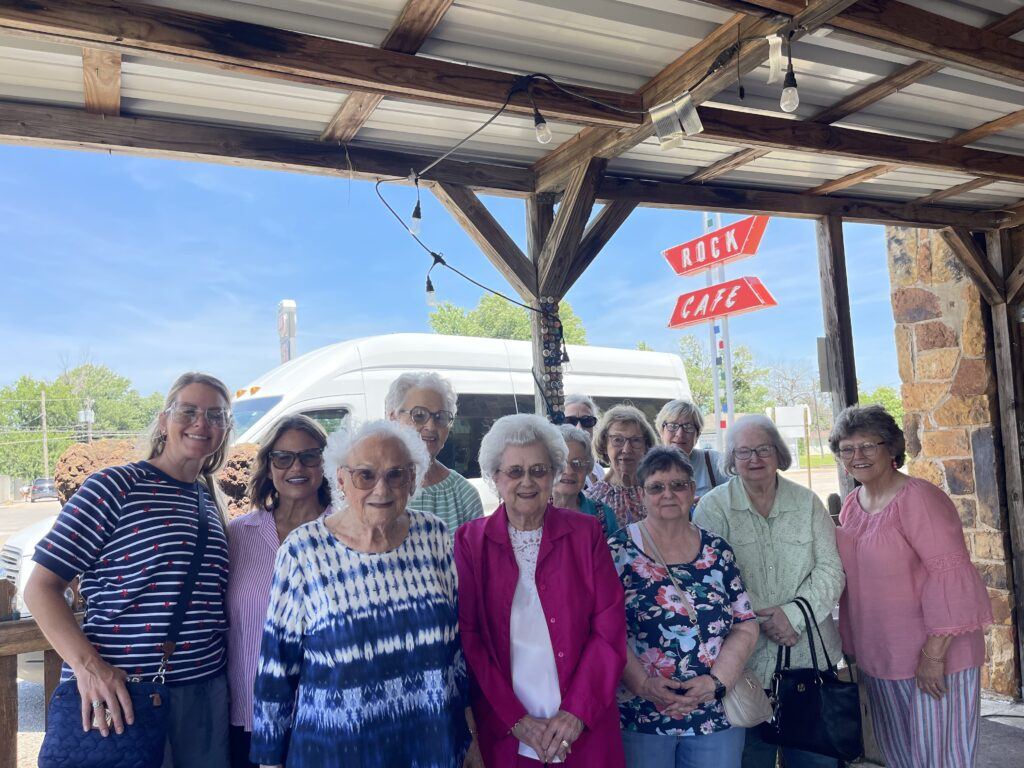
And let’s not forget the food—it’s as legendary as the walls that hold it. The chicken fried steak at the Rock Café has earned a place of pride in Gourmet Magazine, and the Jägerschnitzel, a German-inspired dish served up with rich mushroom gravy, was featured on Diners, Drive-Ins and Dives with Guy Fieri himself. Between the sizzling plates and the stories they carry, it’s no wonder people detour just to dine here.
Another attraction on the way back that we looked at from the van as we were driving by was the …
The Shrine Infants Jesus Shrine
Just a few minutes outside of Stroud sits the Shrine of the Infant Jesus of Prague, a peaceful stop that draws travelers from all over. While we didn’t visit the shrine ourselves and we do follow the teachings of the New Testament we still appreciate the role that prayer, community, and faith play in people’s lives.
We do believe that Jesus came to earth, born as a baby to Mary, and that He lived, died, and rose again so that all who believe and follow the teachings of the New Testament can have eternal life in heaven. And although our paths of worship may look different, it’s clear that the people who built and support the shrine did so out of a deep desire to honor Jesus and create a place for reflection, healing, and prayer. That’s something we can absolutely respect and admire.
As we made our way back home to Ada, I couldn’t help but reflect on how much meaning can be tucked into a simple day trip. From the quiet cemeteries of Vamoosa to the neon glow of Route 66 in Stroud, every stop along this old highway held a story of resilience, of change, of faith, and of community. It reminded me that while roads may shift and time may pass, there’s something grounding about tracing the paths of those who came before us. Whether you’re chasing nostalgia, good food, or just a little adventure, there’s a richness to be found in the small towns and winding backroads of Oklahoma. And sometimes, all it takes to discover it… is a tank of gas, an open heart, and a stretch of old Highway 99.
Much of the historical information in this article was compiled from public resources, local history websites, and preservation groups focused on Oklahoma’s Highway 99, Vamoosa, Bowlegs, and Route 66 heritage. Source: Oklahoma Historical Society archives, Denison Dam infrastructure history, and Stroud’s local tourism board.
Disclosure: As an affiliate, I may earn a commission from qualifying purchases made through links on this site. Thank you for supporting my content! If you want to learn how to make money from an affiliate click here!

